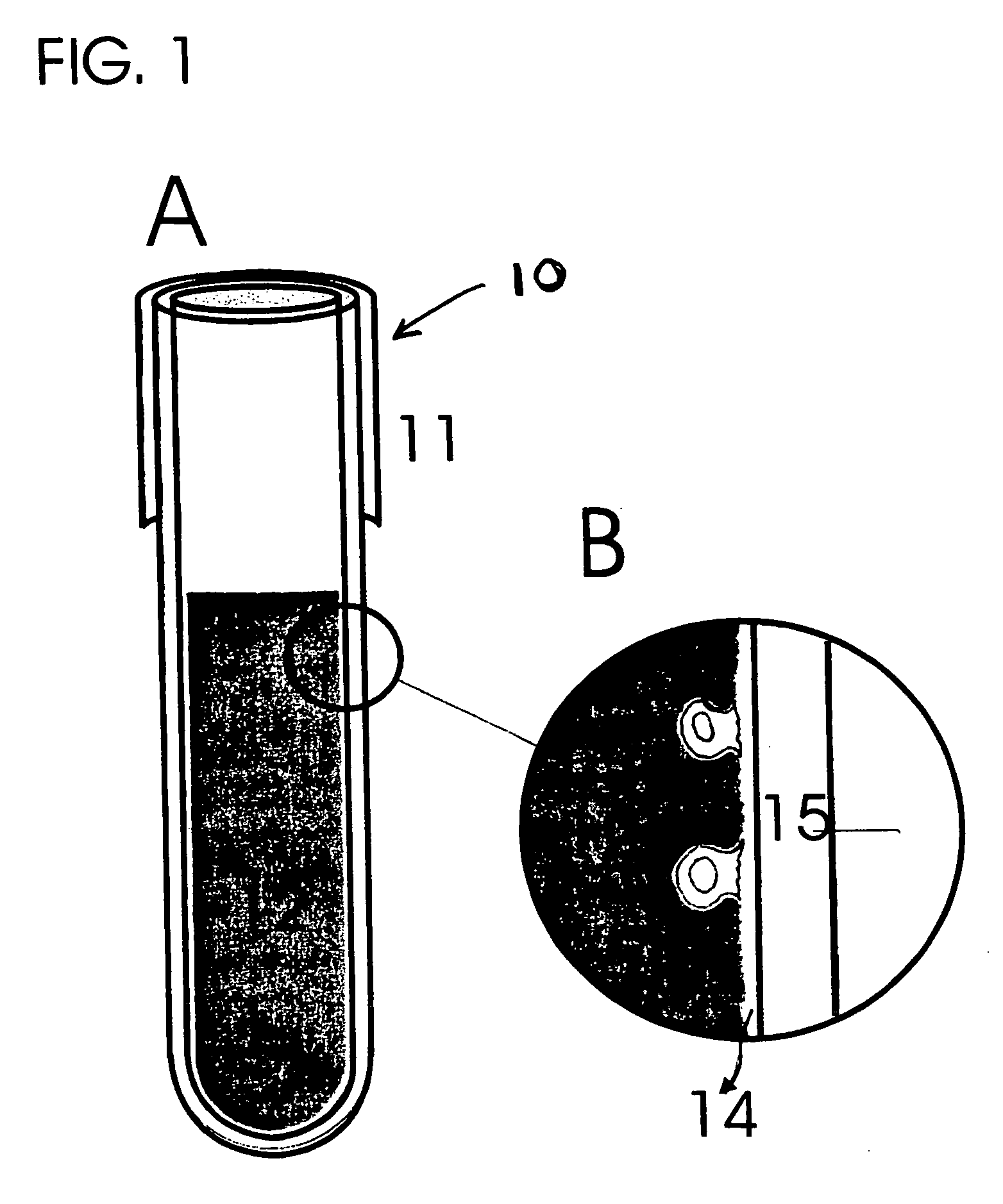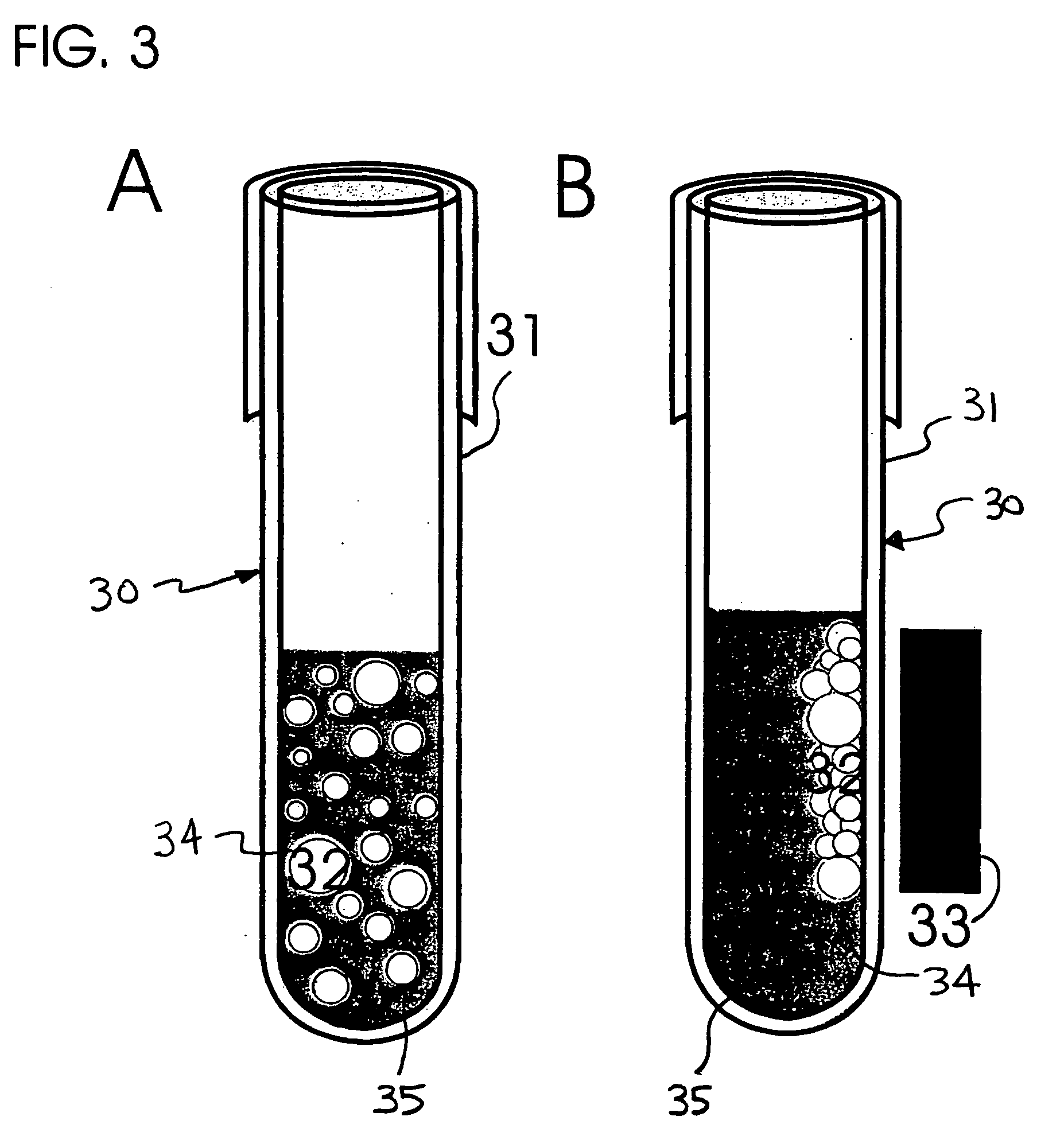Cell separation matrix
a cell and matrix technology, applied in the field of cells-separation matrix, can solve the problems of not having a cell viability reference, complex sample processing, and not solving cells that existed in clusters
- Summary
- Abstract
- Description
- Claims
- Application Information
AI Technical Summary
Benefits of technology
Problems solved by technology
Method used
Image
Examples
example 1
Preparation of Crosslinked Gelatin Films.
[0108] The following method may be followed to prepare crosslinked gelatin films useful in respect of preparing a modified matrix embodiment of the present invention: [0109] (a) gelatin is isolated from connective tissues of human or other animals [0110] Type I collagen is purified from connective tissues of rat tails or human placenta and heat-denatured by boiling for 5 minutes. The gelatin solution is then allowed to dry at 100° C. in an oven under vacuum. Gelatin powders include these produced by acid- or heat-extraction and these from commercial sources including, but not limited to, heat-denatured bovine type I collagen type A derived from porcine skin, Sigma Chemical Co., St. Louis, Mo., USA. [0111] (b) Core materials are coated with gelatin [0112] Gelatin powders are washed with chill distilled water three times by stirring and centrifugation of the gelatin particles. The gelatin solution, containing 2.5% gelatin w / v and 2.5% sucrose...
example 2
Blood Cell Separation Using the Modified Matrix Film.
[0121] (a) Blood or buffy coat are prepared as sources of cells [0122] Five to ten ml of blood are drawn from control subjects or patients with a diagnosis of the presence of primary tumor or metastatic cancer into a blood collection tube (Vacutainer, Becton Dickinson, green top, each tube holds 7-ml) containing lithium heparin as an anticoagulant. Blood or cells collected from an in vivo source are subjected to cell isolation within a relatively short time after their collection because the cells may lose their viability. In order to maintain the optimal isolation of cancer cells, it is preferred that blood or tissue samples are stored at 4° C. and used within 24 hours after their collection, most preferably, within four hours. [0123] Buffy coat is processed from blood by conventional density gradient centrifugation using Ficoll-Paque (Pharmacia) that removes the majority of red cells leaving a thin layer of nucleate cells, cal...
example 3
Identification of Viable Cancer Cells
[0130] (a) Colony Formation
[0131] A portion of enriched nucleate cells, i.e., equivalent to 0.1-ml blood volume per well, are seeded onto a 16-well microtiter plate-glass slide (in 96-well microtiter plate format; Lab-Tek, Rochester, N.Y.) comprising tissue culture medium containing 10% heat-inactivated human plasma (complement-inactivated human sera) or plasma. Cells are allowed to propagate for four days to two weeks thereby allowing the cancer cells to form colonies. It was estimated that, among approximately 100 putative metastatic cells isolated from the blood of patients with metastatic diseases, there was only one colony of carcinoma cells formed after one week of culture. The efficiency of colony growth in culture appears to be 10,000 folds higher than what was observed in vivo, suggesting that, free of host immunity, cultured cancer cells increase their capability to grow.
[0132] (b) Apoptosis and Cytolysis
[0133] Cells are cultured f...
PUM
| Property | Measurement | Unit |
|---|---|---|
| diameter | aaaaa | aaaaa |
| mesh-opening widths | aaaaa | aaaaa |
| widths | aaaaa | aaaaa |
Abstract
Description
Claims
Application Information
 Login to View More
Login to View More - R&D
- Intellectual Property
- Life Sciences
- Materials
- Tech Scout
- Unparalleled Data Quality
- Higher Quality Content
- 60% Fewer Hallucinations
Browse by: Latest US Patents, China's latest patents, Technical Efficacy Thesaurus, Application Domain, Technology Topic, Popular Technical Reports.
© 2025 PatSnap. All rights reserved.Legal|Privacy policy|Modern Slavery Act Transparency Statement|Sitemap|About US| Contact US: help@patsnap.com



